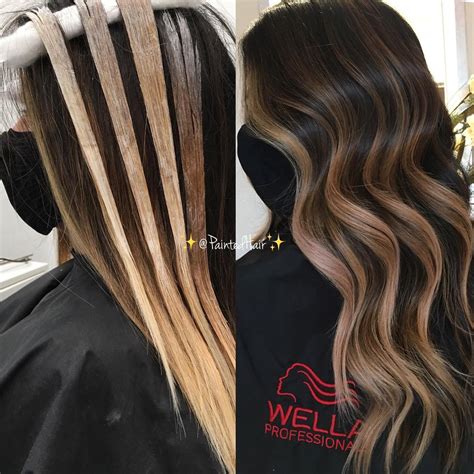Introduction
Highlighting is a popular hair coloring technique that adds depth, dimension, and style to hair. There are two main types of highlighting: full highlight and partial highlight. Both techniques have their own advantages and disadvantages, making them suitable for different hair types and desired looks.

Full Highlight
Pain Points:
* Time-consuming process (4-8 hours)
* Can cause significant hair damage if not done correctly
* Requires regular maintenance (every 6-8 weeks)
Motivations:
* Transforms hair with a dramatic color change
* Creates a high-impact, glamorous look
* Suitable for those who want a bold, noticeable hair transformation
Applications:
* All-over color enhancement
* Creating a dramatic contrast between light and dark shades
* Hiding gray hairs
Partial Highlight
Pain Points:
* Less noticeable color change
* May require touch-ups more frequently (every 4-6 weeks)
* Can enhance natural hair color without drastically altering it
Motivations:
* Adds subtle dimension and shine to hair
* Creates a sun-kissed, natural look
* Suitable for those who want to enhance their hair color without a drastic change
Applications:
* Adding highlights to the crown or front sections of hair
* Creating a graduated effect with lighter ends
* Toning down brassy or unwanted tones
Comparison Table
| Feature | Full Highlight | Partial Highlight |
|---|---|---|
| Color Transformation | Dramatic | Subtle |
| Process Time | 4-8 hours | 2-4 hours |
| Maintenance Frequency | Every 6-8 weeks | Every 4-6 weeks |
| Hair Damage | High | Low |
| Cost | Higher | Lower |
| Suitability | Bold transformations | Natural enhancements |
Benefits of Full Highlight
- High-impact color change: Full highlights create a dramatic transformation that can instantly change your hair’s overall appearance.
- Enhanced hair texture: By adding highlights to different sections of hair, full highlights can create the illusion of more volume and thickness.
- Conceals gray hairs: Full highlights can effectively cover up gray hairs, creating a more youthful and vibrant look.
Benefits of Partial Highlight
- Natural-looking: Partial highlights blend seamlessly with your natural hair color, resulting in a subtle and sun-kissed look.
- Less damaging: Partial highlights only involve coloring a portion of your hair, reducing the risk of hair damage.
- Low-maintenance: Partial highlights require less frequent touch-ups than full highlights, making them a suitable option for those with busy schedules.
Cost Considerations
The cost of highlighting varies depending on the length and thickness of hair, as well as the salon or stylist you choose. In general, full highlights tend to be more expensive than partial highlights due to the longer process time and the increased amount of bleach or color used.
How to Choose the Right Highlight Type
The best highlight type for you depends on your desired look, hair type, and lifestyle. Consider the following factors:
- Hair Texture: Fine hair is more susceptible to damage, so partial highlights may be a safer option. Thicker hair can handle full highlights without experiencing significant breakage.
- Desired Color Change: If you want a dramatic transformation, full highlights are your go-to choice. For a more subtle enhancement, partial highlights are the way to go.
- Maintenance Habits: Full highlights require regular maintenance to prevent roots from growing out and becoming noticeable. If you prefer low-maintenance hair, partial highlights are a better option.
Conclusion
Both full highlights and partial highlights offer unique advantages and disadvantages. By understanding the differences between the two techniques and considering your own hair needs and preferences, you can make an informed decision about which highlight type is right for you. Remember to consult with a professional hair stylist for personalized advice and to ensure your hair is treated with care during the highlighting process.
